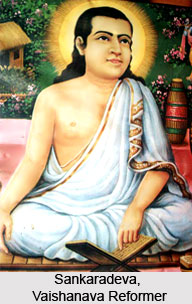 Susenphaa was an Ahom king who ruled over the Ahom kingdom between the periods of 1439 CE to 1488 CE. In various chronicles, Susenphaa has been described as a good king who kept his folks content and prosperous. His reign lasted for about 49 long years. The only disturbance during his rule was the raids of Tangsu Nagas. This was handled by the use of force without any substantial losses.
Susenphaa was an Ahom king who ruled over the Ahom kingdom between the periods of 1439 CE to 1488 CE. In various chronicles, Susenphaa has been described as a good king who kept his folks content and prosperous. His reign lasted for about 49 long years. The only disturbance during his rule was the raids of Tangsu Nagas. This was handled by the use of force without any substantial losses.
Coronation of Susenphaa
Susenphaa was born to the Ahom king Suphakphaa and a Tipam princess and was their eldest son. He was named as Tyaophasuphuk by his parents. He succeeded the throne as an Ahom king in 1439 CE after the death of his father. He was named as Susenphaa when he became the king.
Expedition of Susenphaa against Tangsu Nagas
During the reign of Susenphaa, the Tangsu Nagas emerged as a reason of great disturbance in the kingdom owing to their frequent raids on the people of the kingdom. Their raids caused harm to both lives and properties. The neighbouring Naga tribes were also attacked by him causing heavy casualties. Akhampa Nagas, one of the Naga tribes, pleaded to Susenphaa for help and save them from the atrocities of Tangsu Nagas. They also gifted Susenphaas swords as the token of submission. Susenphaa then personally led an expedition against Tangsu Nagas and fought a gruesome battle with them. The bloody battle resulted in the defeat of Tangsu Nagas but the Ahoms also lost 140 soldiers of their army. However it has been stated in some chronicles that the battle was almost lost by the Ahoms and Susenphaa himself was about to flee from the battlefield. At that time Banrukia Gohain, an Ahom officer, rallied the Ahom army and defeated the Tangsu Nagas, suffering major losses. The villages of the Nagas were destroyed and they had no option than to submit themselves to the Ahoms. Following this, Susenphaa returned to his capital as a victorious king.
Reign of Susenphaa also marked the birth of Sankaradeva in Batadroba or Borduwa of Nagaon in 1449 CE. Sankaradeva was a prominent Vaishanava reformer and the son of Kusumbar Bhuyan, a Bhuyan chieftain of the region. After a long period of rule, Susenphaa died in 1488 CE.



















